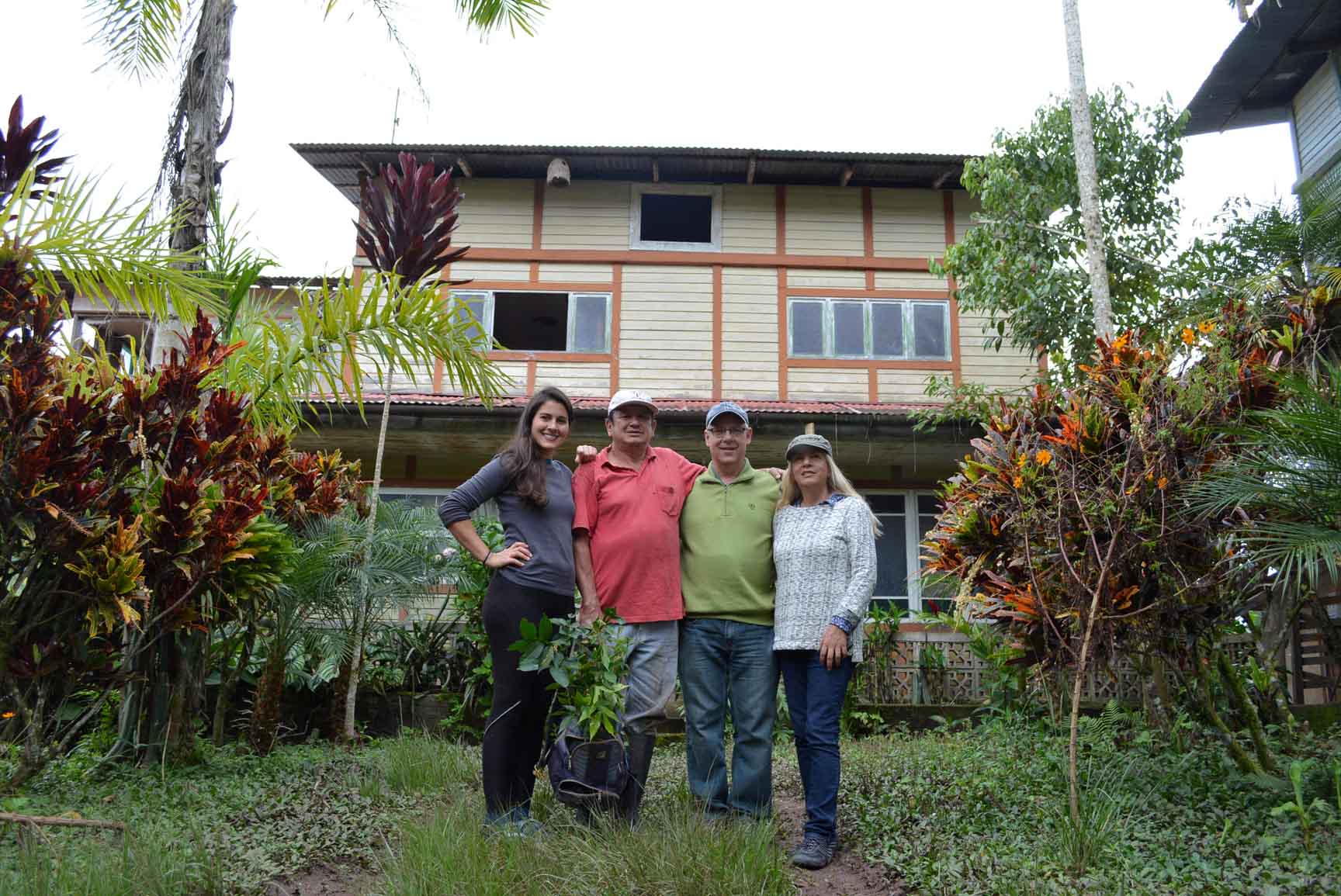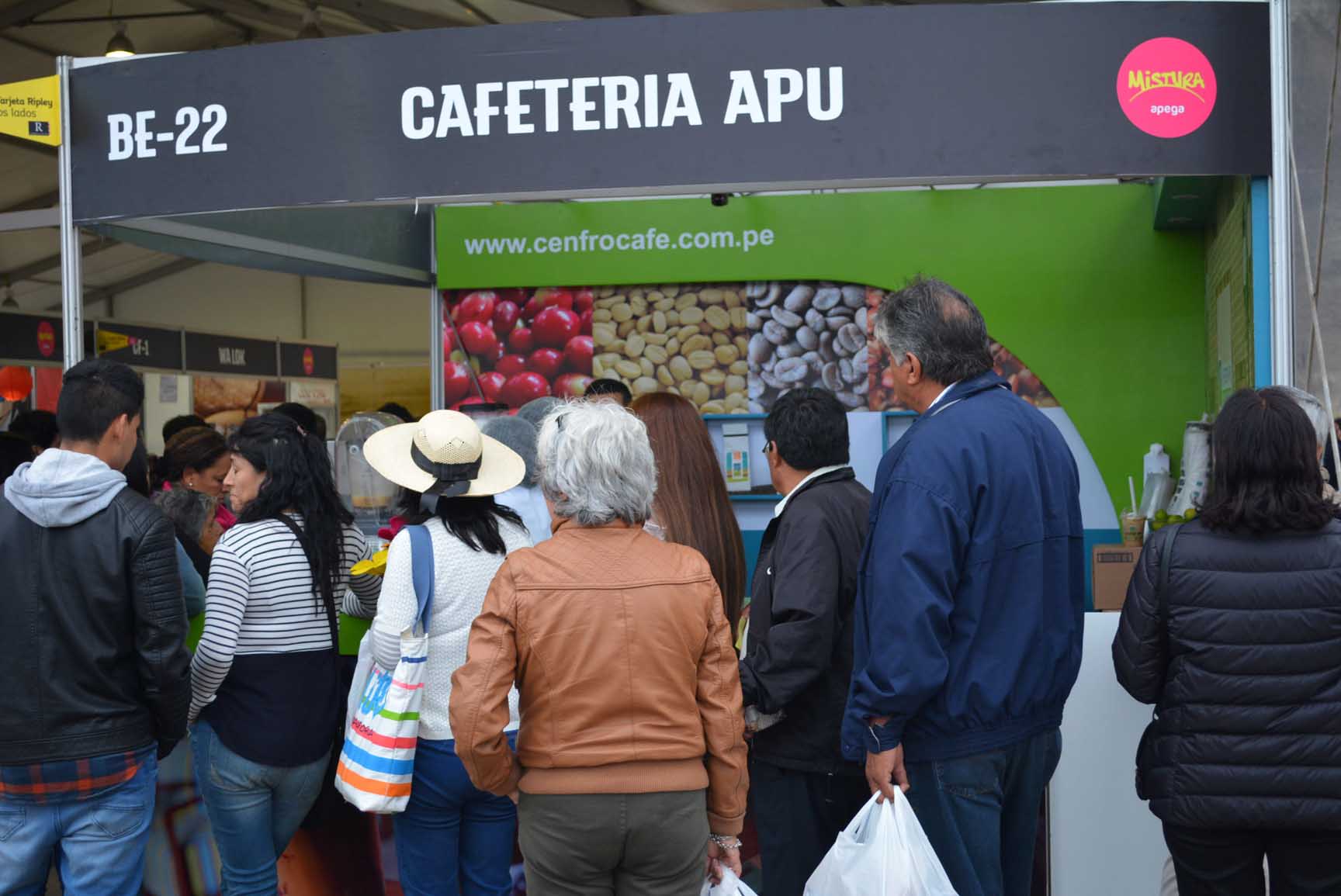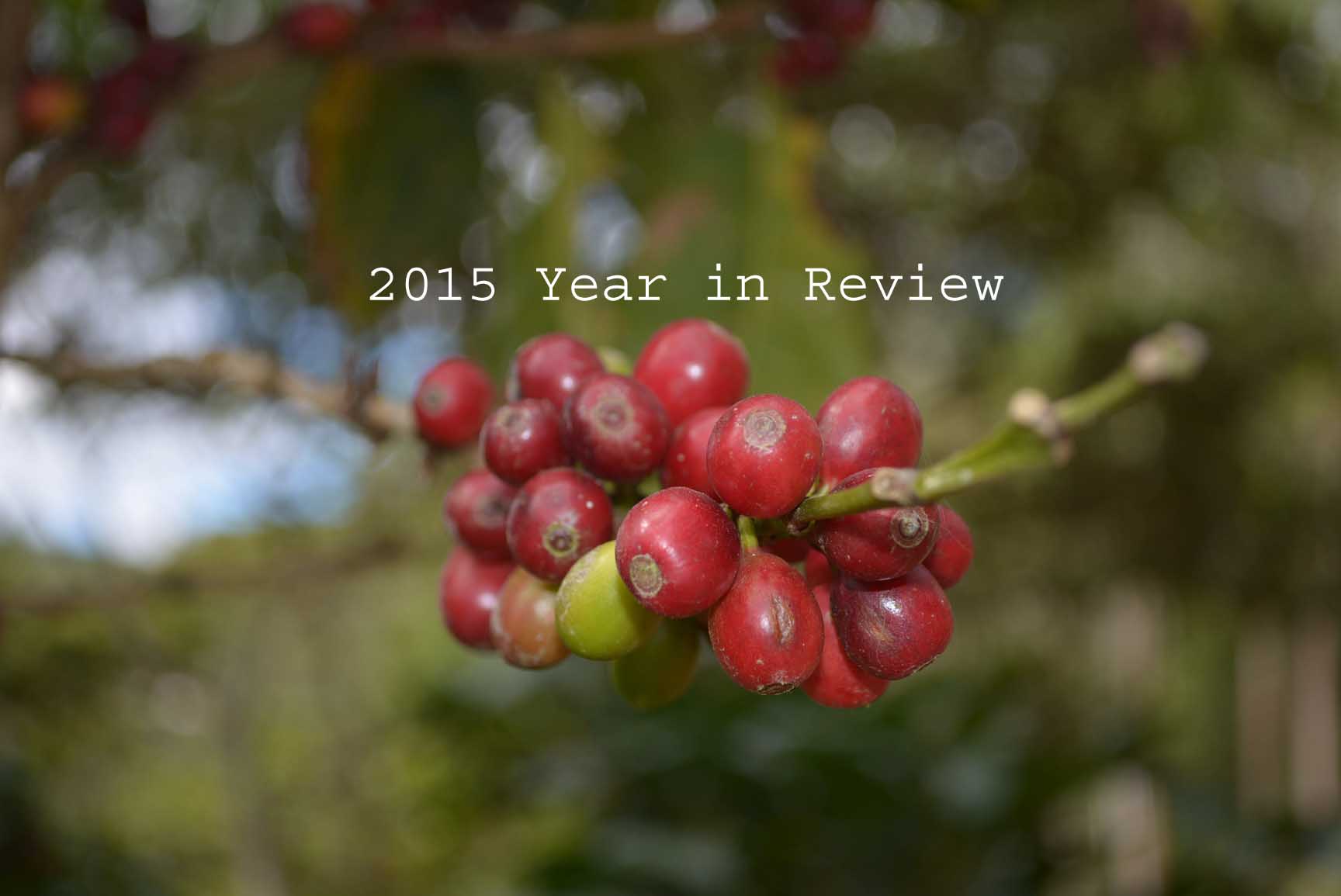December is the month of short days in the northern hemisphere. As I write this today, however I’m in Peru where summer has recently started. Yet, in spite of the disconnect from my “normal” winter hibernation mode, it is still a time of reflection and remembrance as the year ends and a new one soon starts.
The year in review: From the farms
The Curibamba Coffee Project
This year we started to see good things at every level. The farmers seem to be more enthusiastic about the project than ever, and it’s no wonder with coffee prices being in the basement. Overall quality of the coffee has improved each year, and with a large effort to get solar drying tents and tables into the majority of the smallholder farms we’re expecting that quality will be better again with the 2016 harvest.
Meanwhile, we’re streamlining the purchase process, and besides buying the higher quality micro lots, we’ll be also buying coffees that are specialty grade (although below the quality of the best lots,) and paying a premium to be able to fully support the coffee growing community in the hills above San Ramon. Rather than picking and choosing only the “winners,” we’re taking a more holistic approach, and making sure that every farmer has an opportunity to receive a just price for their coffee. We will continue to test each and every lot in the lab, and work for the highest quality possible.
Curibamba was featured in Expo Milan this year, as well as the Mistura Foodie Fair in Lima. It’s currently being sold and enjoyed mainly in the southwest states of Colorado, California, Arizona, Nevada, & New Mexico, but also as far east as Ohio and Wisconsin.
We will continue to focus our support efforts on solar drying tents and tables, but we’re also working with agricultural engineers to see what might best serve the growers. It may be new coffee trees, or strategic washing stations, we’re awaiting input from the fields.
Every year brings more education on the specifics of harvesting, fermenting, and drying. Edegel will be funding not only the educational programs, but will continue funding for the agricultural engineers, organic fertilizers and assistance with promotional programs for the brand.

Chacra D’dago
We’re pleased to announce that Cesar Marin from Chacra D’dago will be visiting the US in February and presenting information on biodynamic farming & coffee updates from the Villa Rica area in the central rainforest of Peru. Details on dates & locations will be announced in January.
What we like about the Marin family, and the surrounding coffee communities of Villa Rica is the willingness to work together, and a commitment to coffee quality at every level. We see an opportunity to build a sustainable coffee source that not only provides great coffee, but does so in a way that empowers the community.
There’s so much more than just coffee happening here. Chacra D’dago not only produces coffee, but uses biodynamic practices to be a self contained, fertile system. Incorporated are many rare plants and medicinal herbs that not only provide rare trace elements not found in traditional agriculture, but are also valuable economically, which can provide a source of additional income for the farmers. What most small coffee growers need is additional sources of income for the times outside of harvest season. The search for a “balance” product that can be used by all of the community is vital to improving economic conditions.

Fundo Santa Maria
We were extremely pleased to add Fundo Santa Maria & the Taipe family to our list of growers this year. Working with the Cooperative “The Development of the Production of Cacao & Coffee in Agro-Forestal Systems” (my translation,) we hope to bring more of this fine coffee to the US next year.
This coop was one that came to our attention late in the buying cycle, and we were quite impressed with the quality and obvious care that went into their coffee. The remote Mazamari area in Peru has a history of poverty, and we look forward to seeing some community improvements as this area as the farmers work together for the good of all.
The chocolate is delicious too 🙂
On a side note, Peruvian Airline LCPeru now offers weekly Saturday flights to Mazamari, which helps to avoid the arduous road trip from Lima, and provides easier access to not only Mazamari, but La Merced/San Ramon, Villa Rica, and onward to Oxapampa & Pozuso as well. (Author’s note: a week is a nice little trip.)

Finca El Dorado
Horst Gehrmann of Finca EL Dorado was a tasty find for us this year. Hailing from the Villa Rica area (like Chacra D’dago) Horst has made an investment in quality, and is painstaking about recording everything he does. Meticulous attention to detail can only improve quality, and we’re happy to have this connection.
Once again, I can’t say enough about the community around Villa Rica. Spearheaded by the Marin family, but supported by growing families such as the Gehrmanns, this area may show us a way for more communities to be self sustaining, and economically viable.

Cenfrocafe
Our lots of Chasqui and Apu Gourmet coffees continue to sell well. We have always been impressed with quality, but more importantly the commitment to the growers that this Coop provides. They move a lot of coffee; it’s really quite an organization.

A Word about Fair Trade/Direct Trade
The last few months have seen several articles in the coffee world about Fair Trade & Direct Trade. Fair Trade is an organization that certifies products are paying a “just price.”
From their website:
Fair Trade goods are just that. Fair. From far-away farms to your shopping cart, products that bear our logo come from farmers and workers who are justly compensated. We help farmers in developing countries build sustainable businesses that positively influence their communities. We’re a nonprofit, but we don’t do charity. Instead, we teach disadvantaged communities how to use the free market to their advantage. With Fair Trade USA, the money you spend on day-to-day goods can improve an entire community’s day-to-day lives.
Direct Trade is defined on Wikipedia as:
Direct trade is a form of sourcing practiced by some coffee roasters, referring to direct sourcing from farmers, with standards varying between producers. Direct trade is seen as an alternative to Fairtrade certification, and represents the interests of roasters who disagreed with elements of Fair Trade, including:
The lack of increase in Fair Trade premiums paid to farmers; the lack of what the direct trade advocates perceived as a sufficient quality-incentive for farmers;
Limits on Fair Trade participation (i.e., individual farms cannot be certified unless part of a cooperative, and plantations and estates are not allowed to join cooperatives);
Fees involved in being a participating Fair Trade company (e.g. fees, dues, and surcharges).
Advocates of direct trade practices promote direct communication and price negotiation between buyer and farmer, along with systems that encourage and incentivize quality. There is no agreed definition of the term, and, unlike Fair Trade coffee, there is no third party certification that the conditions stated by the coffee buyers are being complied with.
The ceiling even with Fair Trade pricing is often still only a small margin over a typical growers cost. So as a Direct Market coffee buyer, I’m able to actually pay a farmer a price that allows for renovation of the farm via new plantings, regular fertilization, pruning etc. and yet save some money too.
While working directly with smallholder farms, we also make a huge effort to see the “bigger picture,” and to work with the communities where our coffee originates. Whether this is done through a cooperative, or with direct relationships with farmers is not the point. The idea is to seek a long term sustainable situation for all. In that way, everyone benefits. Todays small efforts can make a change over several seasons as everyone gets to know each other & confidence builds. One just doesn’t walk in and set up at will, it takes planning, and good relationships to form.
Are we doing enough? I’d like to say that we are in our small way helping to change the world, but it’s an immense undertaking, and it’s not confined to just the coffee market. A truly sustainable & just system would involve so much more than our minuscule efforts. We have to humbly learn all that we can, and try to glean knowledge from the good work of others, all the while juggling the daily demands of the coffee business.
Faced with the cold reality of the coffee market, one would be inclined to give up, or to buy cheaper coffee that degrades the hard work of the farmer by paying what amount to slave “wages.” While perhaps this may be a better textbook business model, we will continue to walk our talk, and pay more, in hopes of making a few lives better.
2016
The past year flew by, and I expect that it will be about the same for 2016. Stay tuned on these pages for all updates. Please contact me with any questions, any time.
Best wishes for a wonderful 2016. Thanks for your support.
